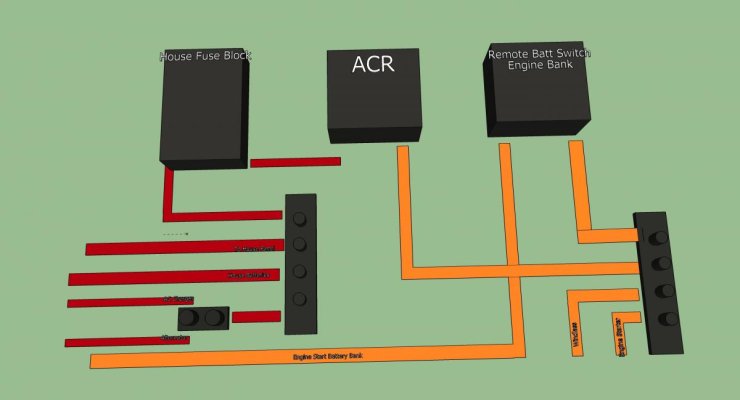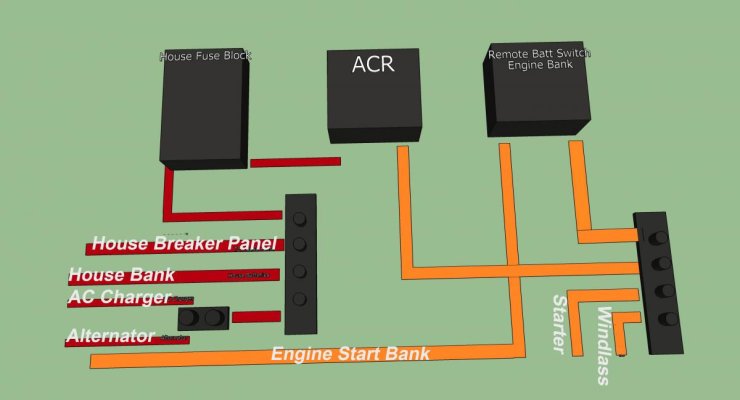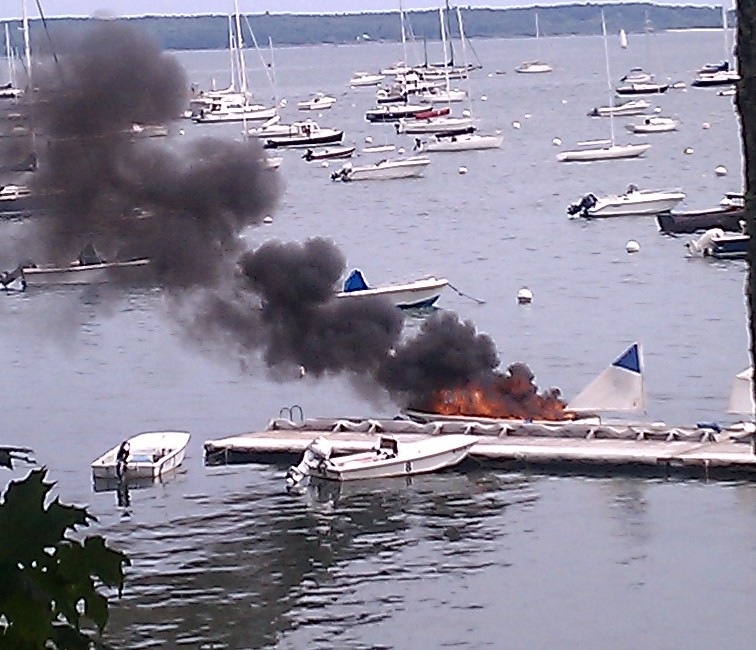I'm going through the endless process of untangling and updating the wiring on my 1981 CHB.
I would like to wire up the alternator with an ACR (automatic charging relay), so anytime the engine is running the alternator charges house + engine bank. However, in doing so the ACR switch will be active when the AC charger is powered, which is about 300 days year.
Is it ok to keep the house and engine banks combined for that much time, with AC charger? The house and engine are sized differently, conventional wet acid chemistry.
I would like to wire up the alternator with an ACR (automatic charging relay), so anytime the engine is running the alternator charges house + engine bank. However, in doing so the ACR switch will be active when the AC charger is powered, which is about 300 days year.
Is it ok to keep the house and engine banks combined for that much time, with AC charger? The house and engine are sized differently, conventional wet acid chemistry.




 I'm still learning about all of the systems on this boat - oh, the joys! Next I will install a 50 amp galvanic isolator, just in case.
I'm still learning about all of the systems on this boat - oh, the joys! Next I will install a 50 amp galvanic isolator, just in case.